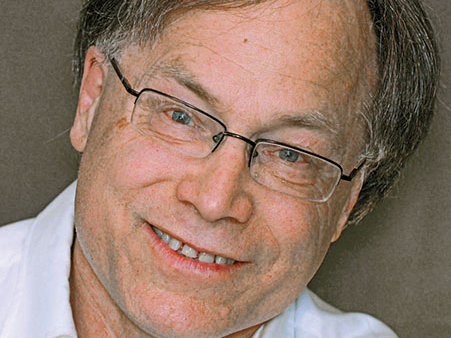My students should have paid me for giving them the chance to see Bob Rae in action. Not just because Rae is a professional negotiator and the class deals with Nash Bargaining theory. Rae himself is an historic figure and he is dealing with historic treaty issues in the face of an historic mineral development. I brought history into the classroom. Of course, hardly any students knew what they were getting.
Rae’s visit offered students a glimpse of something like the Canada-Sweden Olympic rematch in hockey. Back in the 1840s, a report by Douglass Houghton, Michigan's first state geologist, set off a copper boom in upper Michigan and Isle Royale in Lake Superior. The Family Compact of Upper Canada began selling mining properties to promoters on the north shore of Superior and Huron. When chiefs like Shingwaukonse of Garden River objected to southerners selling lands they occupied, the leader of the Family Compact sent his brother, William Benjamin Robinson, to get the 3,000 Northerners to give up their rights.
Shingwaukonse announced that his band would only negotiate through Mr. Allan Macdonell, a Toronto lawyer. Today, Bob Rae stands in the same position Macdonell once did, and once more we have Toronto negotiating with Toronto over Northern resources!
The Dictionary of Canadian Biography claims the Indians got slightly better terms in the Robinson Treaties as a result of Macdonell’s agitation. Rae hopes the outcome will be a lot better for the 4,000 people of the region he represents. He probably won’t lead an armed attack on a mining operation as Macdonell did, and he won’t be jailed for treason as Macdonell was.
My students may not have known much about the Ring of Fire, Bob Rae or Northern treaties, but they knew a few things about bargaining theory and sustainable development that Rae and his clients may not know. It was a classic case of old-style, real-world experience meeting newstyle, formal theory and neither side having a clue what the other had to offer.
Rae talked about a positive negotiating approach based on looking for activities both parties can agree on. He drew overlapping circles on the board to represent what the Matawa First Nations want and what the mining companies want. He called the area where the circles overlap the Area of Agreement. As he worked I started to understand why John Nash got the Nobel Prize in Economics for his version of bargaining theory.
Rae’s diagram classifies the possible agreements by whether they are acceptable or not. Nash goes farther by ranking all the possible agreements for each side. Each possible agreement is classified by how much better it is for me and for you.
We don’t even start bargaining until we have invested time and talent to make sure we have the best version of every possible agreement. That points to a problem in the Ring of Fire negotiations: there is no guarantee that the negotiators will find the best solutions.
There are problems that call for engineers, and economists, and urban planners and transport specialists. First Nations don’t have the expertise to make technology choices. Nor does provincial negotiator Frank Iacobucci, a former Supreme Court justice and an expert in tax and business law.
At 77, he probably can’t compare the social impact of hybrid aircraft and all-weather roads. The Ring of Fire transportation schemes and energy plans actually come from project proponents, the mining companies. Mining companies are notoriously conservative about technology.
There may be tremendous gains from developing newer technologies, but the companies can’t afford to add technological risk to the political and economic risk they already face.
The big winners from technological and social innovation in the Ring of Fire would have been the First Nations and the province. They should have been working on their strategy for years.
John Nash was probably a worse negotiator than Bob Rae, but his students and my students learn not to start bargaining until they have spent the time and money they need to find the best version of every possible agreement.
That’s hasn’t happened in the Ring of Fire negotiations and we will all be losers.


